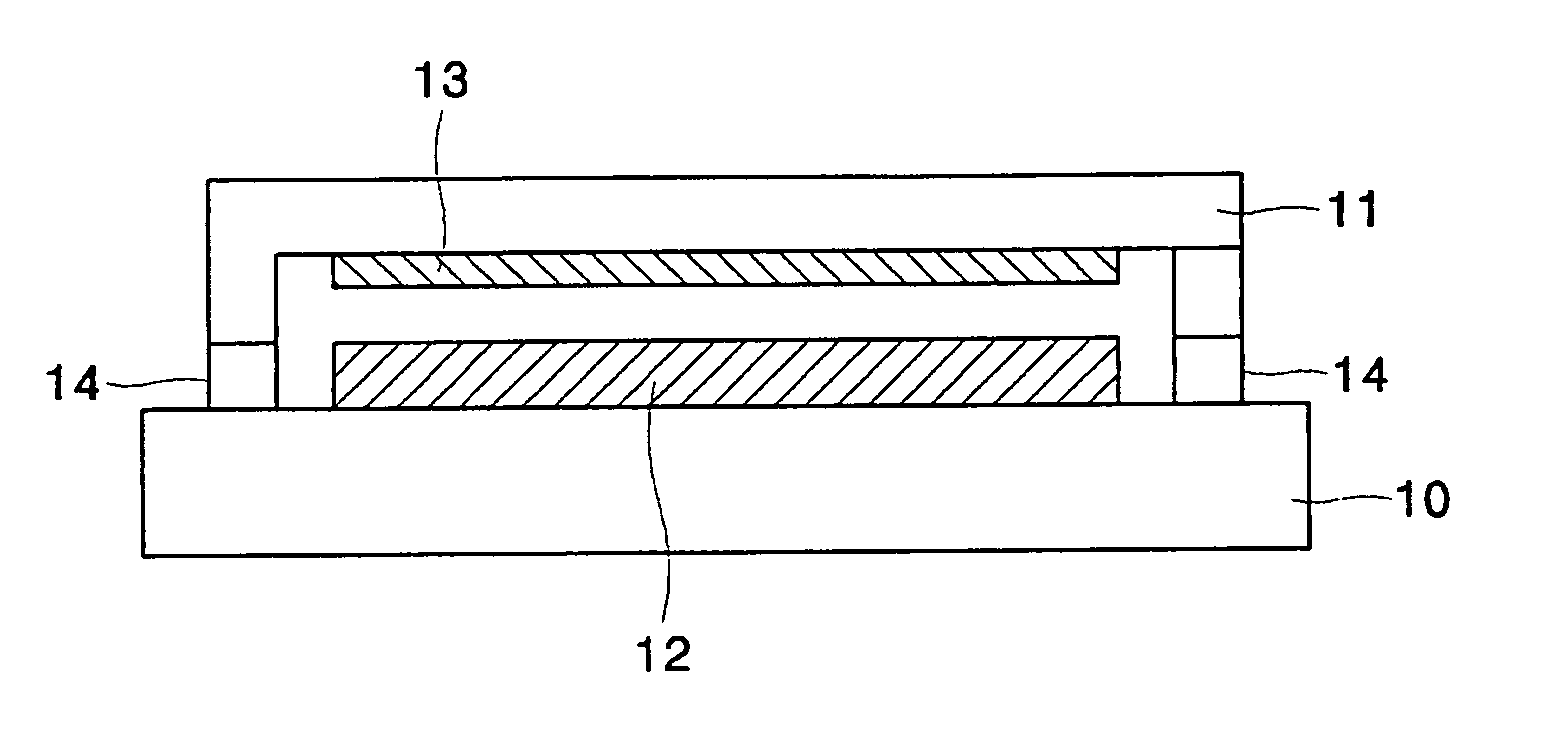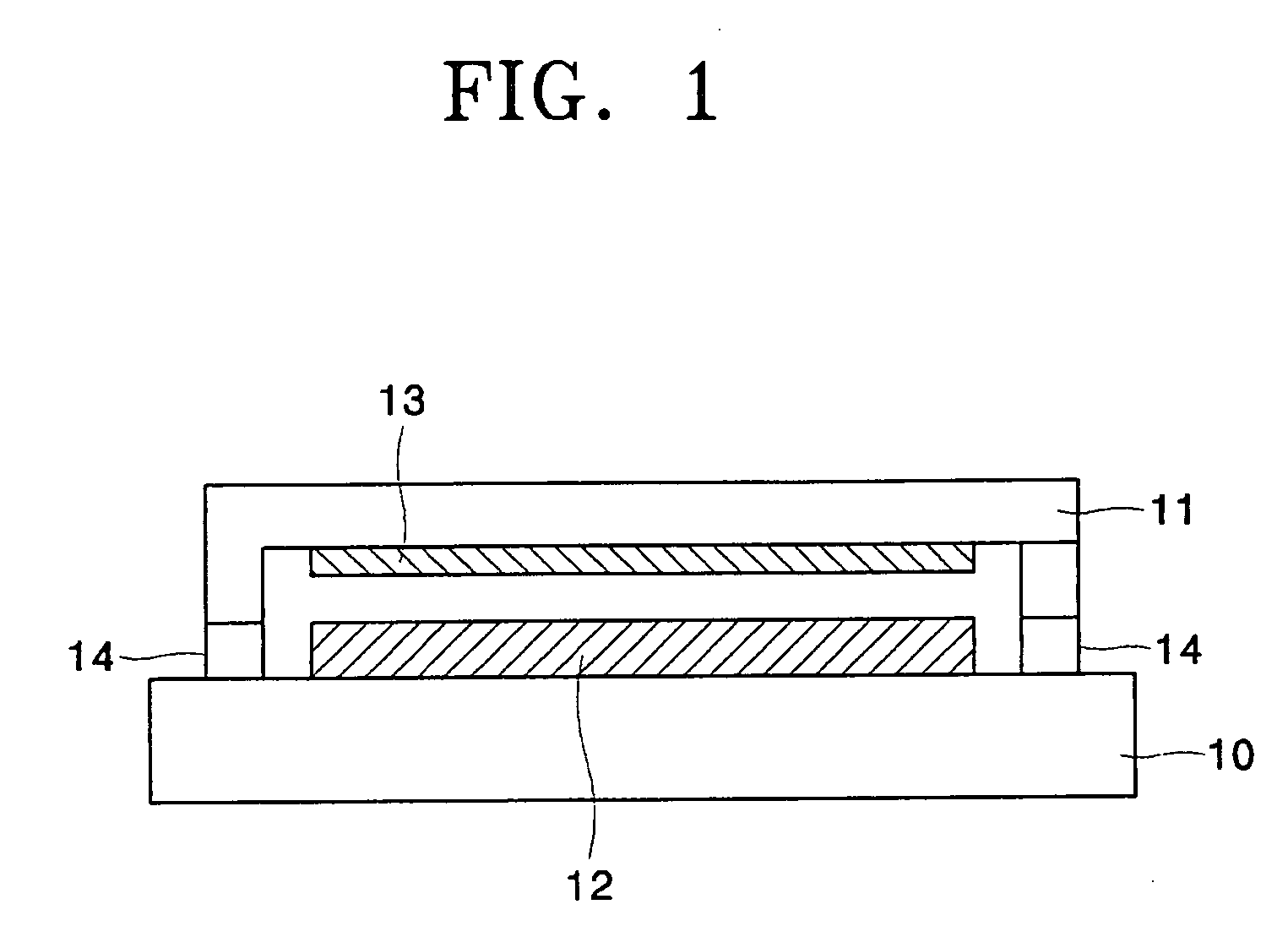Organic electroluminescence display and method of manufacturing the same
- Summary
- Abstract
- Description
- Claims
- Application Information
AI Technical Summary
Benefits of technology
Problems solved by technology
Method used
Image
Examples
example 1
[0038] A nitric acid was added to 95 g of ethanol to adjust pH to 2.5 g of CaO powder was added to the solution and mixed for 3 hours or longer to obtain a mixture in sol state.
[0039] The mixture in sol state was spin-coated on a soda glass substrate at 180 rpm for 120 seconds and dried in a drying oven for about 2 minutes to remove the unvaporized solvent. The resulting structure was thermally treated at about 250° C. for 30 minutes to form a transparent, nano-porous CaO layer having a thickness of 3.5 μm.
[0040] A plasma treatment was performed on a region of the soda glass substrate, in which a sealant was later applied, in an Ar gas atmosphere after the transparent, nano-porous CaO layer was formed. The plasma treatment was performed at a pressure of about 5×10−5 torr, an Ar flow rate of about 150-250 sccm, and a RF power of about 300W for about 5 minutes.
[0041] Subsequently, an epoxy resin as a sealant was applied to at least one of the plasma-treated soda glass substrate and...
PUM
 Login to View More
Login to View More Abstract
Description
Claims
Application Information
 Login to View More
Login to View More - R&D
- Intellectual Property
- Life Sciences
- Materials
- Tech Scout
- Unparalleled Data Quality
- Higher Quality Content
- 60% Fewer Hallucinations
Browse by: Latest US Patents, China's latest patents, Technical Efficacy Thesaurus, Application Domain, Technology Topic, Popular Technical Reports.
© 2025 PatSnap. All rights reserved.Legal|Privacy policy|Modern Slavery Act Transparency Statement|Sitemap|About US| Contact US: help@patsnap.com


